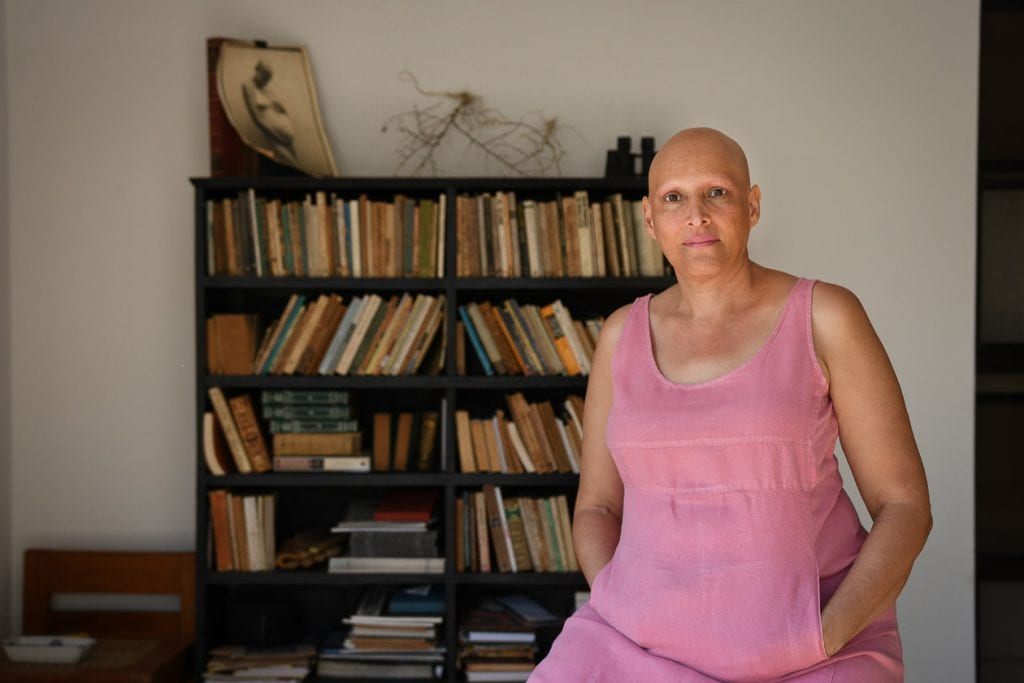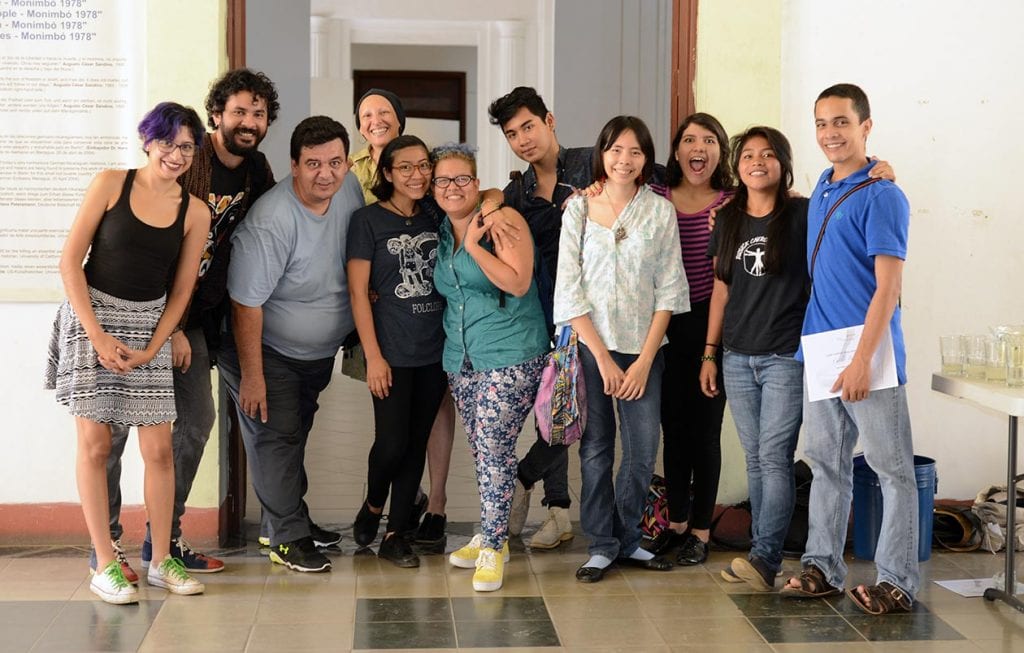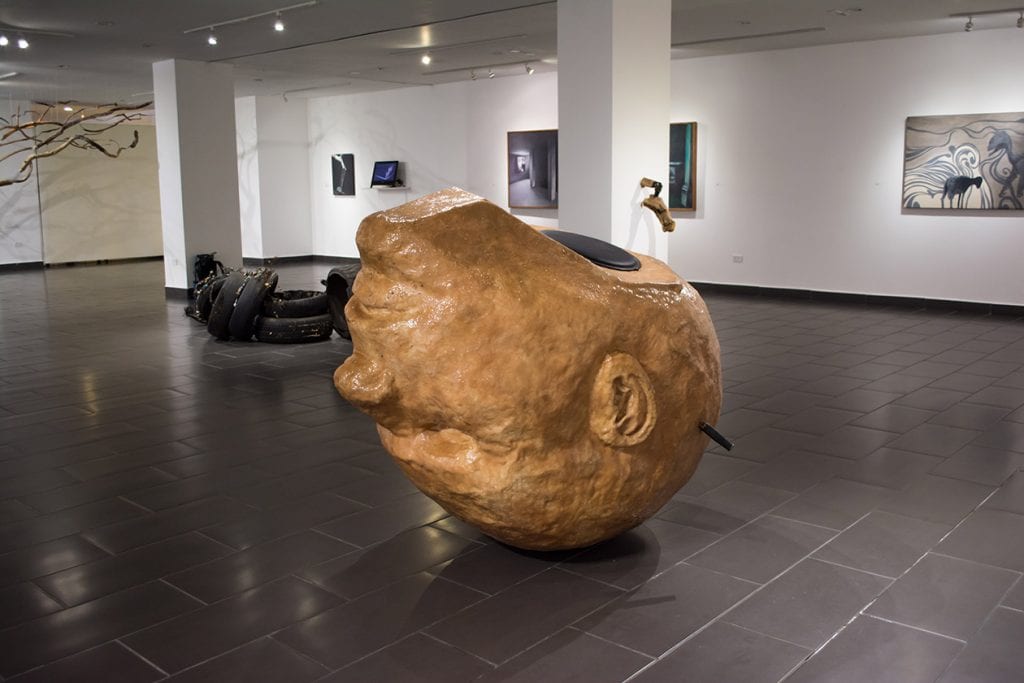Nicaragua’s Patricia Belli: from Tragedy to Rejoicing
Celebrating her thirty year artistic career with an exhibition entitled “Balance and Collapse”
by Juan Carlos Ampie (Confidencial)

HAVANA TIMES – Patricia Belli is possibly the most influential contemporary Nicaraguan artist of our times. The opening of “Balance and Collapse”, an exhibition of her collected works at the Ortiz Gurdián Foundation’s Managua Art Center, is the perfect excuse to talk with Patricia about her three decades in the world of Nicaraguan art.
Her introduction to art was natural. “My father was an artist. He wasn’t a professional, dedicated to an art career, but he was constantly painting and taking photographs. The act of creation interested him a great deal. My mother, who never considered herself an artist or even a craftswoman, is a super-creative person. The two of them made a ton of things at home. My Mom made my clothes; my Dad even made the shelves! I grew up with the firm idea that you do all these things in the home yourself.” Patricia was startled when she went to her friends’ houses and discovered that their parents were nowhere near as self-sufficient.
When it came time to choose a career, she felt that her affinity for the sciences was the road to follow. “I arrived at the university thinking I was going to study biology or major in pre-med – some career related to research, which has always interested me and to this day still does. I had microscopes, science kits. But soon I saw that the field of medicine was far away from what really interested me. I took a class on Art Fundamentals, and with that class I realized that I was really interested in this other kind of research.”
Many of your works are based on your own intimate dimension: your person, your body. Was it difficult to expose yourself in that way? Did you feel at all embarrassed?

I really can’t imagine making art any other way. I work with the most personal, the most intimate, because that’s what I know. Now I work with other topics, in a more objective way: more scientific, more about physics, about natural phenomena. But even that continues to be like a metaphor, like a tool for understanding very personal phenomena. I can’t imagine working with things that are distant from me. Not only can’t there be any embarrassment in that, but it’s the only honest form that I can find to work.
Miguel Lopez, the exhibition’s curator, says in his written introduction: “It seems that Belli creates to bring together all parts of herself”. What do you think about that statement?
I love that phrase, because I truly don’t know if it’s just me, or that all of us in general are fragmented and dispersed, as much in terms of information, as for reasons of our physiological constitution. We’re somewhere out there among dichotomies, binary oppositions. For example, we’re dispersed between ourselves and the universe; man and woman. We’re disconnected. And it’s a very unique opportunity that we sometimes have to come back together and unite: for example, as part of a couple; or just within oneself; or within the social world. Art, in some way, is an intent to achieve that reconnection.
—–
In 2002, Belli earned first place in the II Biennial Painting competition held by the Ortíz Gurdián Foundation. The piece she submitted was “Difficult Flight,” a work that challenged the traditional concept of what a painting is. The prize catapulted her into the maelstrom of a controversy that traditional teachers were facing with the new generations. “In emotional terms, it was very difficult. I became the target of a lot of hatred on the part of a bunch of people, not only from the old guard, but also young people like the students at the School of Art,” Belli recalls.
After returning from her Masters’ studies undertaken with the sponsorship of a Fullbright grant, Belli decided to establish workshops for training young artists. “I didn’t have the resources for a school; that was unthinkable in the sense that I would need a facility, a body of teachers. So, I had to work with my own resources, and what I could do was to open a space in my house, with an invitation issued through the media. And that was its tenuous beginning – a very small thing that grew little by little. It never became huge, right? But it did become meaningful and important for the medium, in terms of changing the way we were regarded.” Now, the school Espira la Espora [Breathe out the Spores] is a regional point of reference.
Let’s talk a little about your process. You work with a lot of mediums. How do you know what form an idea is going to take?
Above all, I’m a sculptor. My work with space is what motivates me. And later in the process there are other ideas and solutions that arise from my work with the material. I start with how those materials behave, and this generates a metaphor for me that in turn feeds off of my other vital concerns. Normally, that’s the path. I see something in the street, I see something in my own workshop and I say, “That’s flexibility!” or “That’s vulnerability! I see it!” Then, what I do is to clarify that idea in something that’s yet more purified. But at times that idea leads me on to another idea, and I say: “Okay, in principle this would need to move! To walk!” To do something that the sculptured material itself doesn’t provide. So, then it might have to be a video, and that’s what I need to test and see if it works. I haven’t tried out all the languages, not nearly. Performance gives me the shakes all over. That business of putting out your body and putting myself before the public – it’s not something that comes naturally to me.
—–

Her affinity for science shines through in her more mature works. The organic experience of balance informs the best pieces of the exhibit. “For example, in 2010 I made a piece called ‘Precarious Balance’. That piece made me absolutely aware that this was the direction to go in. Nevertheless, the balance isn’t that precarious. It’s a static balance. If you cut one of the cords, the thing will come down, but overall it’s pretty stable.” The researcher that resides in her fed “Collapsed” with the testimonies of people who have experienced or witnessed the loss of this state. A giant head made from fiberglass, hides a speaker that plays the taped testimonies when it’s moved over the ground.
How do you feel upon seeing 30 years of your work all together in one place? Do you recognize the person who made those first pieces?
I totally recognize her. Further, I believe that a part of me continues to be this person. Not all parts of me, and there are even parts that have some conflicts with the person that I was, But to begin with, I feel that the emotional tone of melancholy continues up until today. That thing that’s not tragedy, that’s nothing more than a minimal balance point between the tragic and other forms of emotion such as rejoicing.
What would the 2017 Patricia Belli say to that of 1986?
Take it easy! Things aren’t all that bad!





